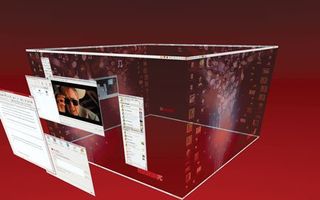You Can Switch to Linux!
Using Linux
If you’re like me, you’ve probably spent more time installing Linux than actually using it. Here’s what you need to know to get started on a permanent switch to the penguin
The good news about Linux is that there’s an unbelievable amount of information available on the Internet to help you learn to use the open-source operating system. The bad news is that it can be crushingly difficult to find said information. There are a multitude of reasons for the search problems, but most of the time the problem is that you’re not searching for the right thing. A normal person wouldn’t know that you need to edit the fstab to mount new drives or edit xorg.conf to adjust your resolution. Here’s the info you’ll need to get started.
Install and Configure Beryl

Beryl is a desktop compositing engine that works much like the one included in Windows Vista and Apple’s OS X. It uses your 3D accelerator to draw your desktop, which gives better performance and a better-looking desktop—assuming you’ve managed to install your 3D accelerated drivers.
To install Beryl, you’ll first want to add the following line to your repository list: deb http://ubuntu.beryl-project.org feisty main Before clicking reload, open a new terminal (Applications > Accessories >Terminal) and type wget http://ubuntu.beryl-project.org/root@lupine.me.uk.gpg -O- | sudo apt-key add – (that’s a capital O, not the numeral).
These two commands tell your Linux install where to find the Beryl software and exchange a cryptographic key so that your machine can verify that the Beryl Project server is the machine it claims to be. Once you’ve done that, you can go back to Synaptic and install the beryl, beryl-manager, and emerald-themes packages. Next, type beryl-manager in a new terminal window, and your desktop will be 3D. If you have problems with the installation, check the Beryl Wiki .
Of course, installing the app is only the first step. You’ll want to spend some time futzing around with the options. The Beryl GUI is infinitely more configurable than the Vista or OS X equivalents. Using the Beryl Settings Manager (right-click the red gem icon in your system tray), you can adjust everything from the window open-and-close animation to the amount your windows wobble when you drag them across the screen. The other panel of interest to Beryl users is the Emerald Themes Manager (it’s also accessible by right-clicking the Beryl gem). This tool lets you change the window fixtures common to all apps: the window borders, control icons, and title bars. Feel free to play around with these settings all you want, nothing you adjust here can do permanent damage.
PC Gamer Newsletter
Sign up to get the best content of the week, and great gaming deals, as picked by the editors.
Beryl is still early software, so while we had good luck running it on some hardware, your experience might differ. For now, it’s a preview of the future—and not something that’s suitable for most people to use on a day-to-day basis.

Braid: Anniversary Edition will feature 40 'brand new and/or alternate redesigns of original levels,' and is also delayed into May

This enchanting fantasy city builder packed with fairytale adventures launches in May

'The concerns about claustrophobia were a major aspect' of desiging World of Warcraft: The War Within's underground zones, says director
Most Popular





